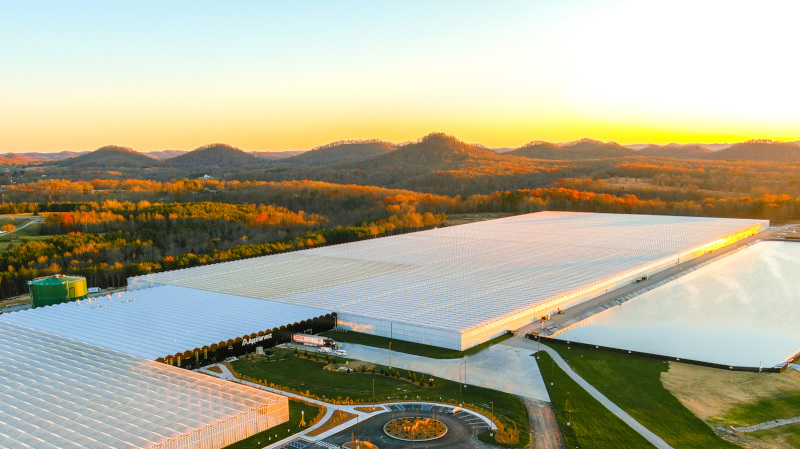By Dan Lubkeman, President of the Hydroponic Society of America
Hydroponics, or soilless growing, is a word that conjures up different visions for different people. For some it’s a form of hobby gardening and, for others, hydroponics is associated with cannabis or perhaps commercially grown fruits and vegetables. In many areas of the world, hydroponics is a method of feeding the hungry and their support animals in arid environments. Today this word is known throughout the world and hydroponics is being practiced on every continent and in every country. There are even plants being grown hydroponically on the International Space Station. Regardless of the application, hydroponics has become a staple in modern growing practices.
The main advantages of using hydroponics are growing more food, in less space, in less time, and with less water. How is this possible? More food can be grown because crops can be planted closer together than they can in the field. The application of water and fertilizer is much more precise, allowing for reduced usage of both by up to 90%, and optimal environmental conditions can help result in faster yields.
According to a recent study by Zion Market Research, the global Hydroponics market size is projected to reach US$ 46 million by 2027, from US$ 24 million in 2020, at a compound annual growth rate (CAGR) of 11.5% during 2022-2027.
Popularly grown hydroponic crops include beefsteak and cluster on the vine tomatoes, many different varieties of fancy lettuce, bell peppers, cucumbers, herbs, cannabis, beans, berries, and much more. Growing crops that are out of season can be very lucrative for the hydroponic grower that works 365 days a year in the garden. Strawberries, for example, fetch a higher price off-season when they are unavailable at grocery stores. Commercial and hobby growers both benefit from this year-round gardening without the burden of long winters to slow them down.

AppHarvest, the largest greenhouse complex in North America, photo courtesy of AppHarvest
Commercial hydroponics is commonly used in traditional greenhouses and indoor farms that use artificial lighting and controlled environments. The largest greenhouse complex in North America is 60 acres and located in eastern Kentucky, run by a company called AppHarvest. There are also vertical farms in warehouses and other buildings and even plants being grown in modified shipping containers.
There are a large number of home hydroponic systems that are pre-fabricated and easily assembled by hobbyists. Ambitious gardeners can also create their own systems with commonly found pieces and parts, and utilize spare rooms, garages, closets, sheds or attics for growing areas. It’s not hard to find a retail hydroponic store where these specialty gardening components can be purchased. Growers will need specialty lighting, environmental controls, fertilizers and additives, containers, growing media, water testing meters, and more.
The hobby hydroponic market has grown significantly, especially with the rise of medical and recreational cannabis. Large distributors of equipment and supplies are currently acquiring hobby hydroponic manufacturers, wholesalers, and retail stores in a race of mergers and acquisitions. These large companies include, among others, Hydrofarm, Hawthorne Gardening Company (a subsidiary of Scotts Miracle-Gro) and Grow Generation. The cannabis market is forecast to grow to over USD 40 billion by 2026, making it very lucrative for those moving into the hydroponic equipment and supply sectors.
As world population soars to nearly eight billion people, new methods of food production are in demand as traditional farming methods struggle to keep pace with consumers. High tech greenhouses and other forms of advanced agricultural practices are failing to keep up with global food demand. This huge demand is compounded with dwindling natural resources, climate change, massive amounts of food waste, and inconsistent farming methods that altogether have become an unsustainable formula for human beings. Hydroponics is one of the growing techniques that can serve as an additional solution for alleviating some of these issues.

Iron Ox Robotic Transplanter, photo courtesy of Iron Ox
Vertical farming has emerged as a newer technology for growing plants more efficiently. Stacking trays or columns of plants can be seen in use by companies like Plenty, CropOne and AeroFarms, e.g., who have gained significant funding to develop their systems. The vertical farming market in the U.S. is estimated at $2.7 billion in 2020, according to Global Industry Analysts, Inc., and is expected to grow to $5.8 billion in 2026.
As growers and investors look to the future of indoor farming, profitability remains at the forefront of their goals. Labor and electrical consumption are two of the greatest expenses. Automation is one of the areas of development for indoor farming that is being developed to reduce labor costs. Companies such as Iron Ox, in the San Francisco Bay area, are working with robotic planting and harvesting systems to improve efficiency and reduce the number of employees. There are other companies utilizing drones and high-tech sensors to monitor crop health and insure the uniform watering of plants. These advanced systems are considered to be an effective means of achieving greater efficiency, but it will be some time before some of these robotic technologies can be amortized to a cost-effective level to grow fruits and vegetables at a price that can compete with field grown crops and organic farms.
There’s a long running debate raging between organic farmers and hydroponic growers over the use of the word “organic” for their marketing and packaging. Consumer perception of the word brings in big dollars at the grocery store. According to a recent research study, the global Organic Food and Beverages Market was estimated at USD 220.00 billion in 2019 and is expected to reach USD 620.00 billion by 2026. Hydroponic growers would like to be able to take advantage of the word organic to get a piece of that very lucrative market sector. Organic growers believe the word should only apply to soil-grown crops that use specific organic practices. This issue is currently under debate right now in the ninth circuit court of appeals.
Cannabis will be the biggest driver of the hydroponics market over the next ten years, a market worth more than the total value of most major crops (corn, beans, etc.) combined. Regardless, hydroponics will continue to play an important role in future farming and advanced technologies will continue to be developed to bring food to the table with greater consistency, quality and yields.
The Hydroponic Society of America
The Hydroponic Society of America (H.S.A.) was formed in 1977 at the University of California, Berkeley. It is a 501c3 non-profit organization that works with hobbyists, commercial growers, scientists, researchers and students to help them achieve their goals through the dissemination of information on hydroponics, controlled environment agriculture, vertical farming, and the related sciences.
While there is a tremendous amount of information on hydroponics on the internet, there is very often a lack of perspective and context that can create confusion for those trying to learn. Bad information can result in wasted time and money, not to mention dead plants. The H.S.A. works extensively to guide people to reliable information to avoid the pitfalls of industry mythology.
*Top photo courtesy of Iron Ox
AT A GLANCE
Hydroponic Society of America (H.S.A.)
What: A non-profit organization working in hydroponics, controlled environment agriculture, vertical farming, and the related sciences
Where: Based in El Cerrito, California
Website: www.hydroponicsocietyofamerica.org



